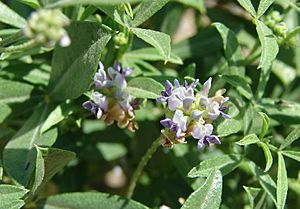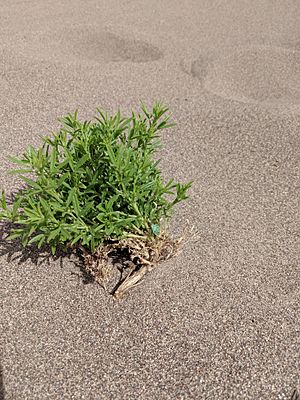Psoralidium lanceolatum facts for kids
Quick facts for kids Psoralidium lanceolatum |
|
|---|---|
 |
|
| Scientific classification | |
| Kingdom: | |
| (unranked): | |
| (unranked): | |
| (unranked): | |
| Order: | |
| Family: | |
| Subfamily: | |
| Genus: |
Psoralidium
|
| Species: |
P. lanceolatum
|
| Binomial name | |
| Psoralidium lanceolatum (Pursh) Rydb.
|
|
| Synonyms | |
|
|
Psoralidium lanceolatum is a cool flowering plant that's part of the legume family. You might know it by its fun common names like lemon scurfpea, wild lemonweed, or dune scurfpea.
About the Lemon Scurfpea
Where It Grows
This plant is native to western North America. You can find it from central Canada all the way down to California and Texas. It loves to grow in sandy places, like alluvial plains (flat areas formed by rivers) and sagebrush areas.
What It Looks Like
The lemon scurfpea is a perennial herb. This means it lives for more than two years. It has a branching stem that grows about 30 to 60 centimeters (about 1 to 2 feet) tall. The stem is covered in many tiny glands.

Its leaves are "palmately compound." This means they look a bit like the palm of your hand with fingers spreading out. Each leaf usually has three long, narrow leaflets. These leaflets grow on a short stem called a petiole.
The flowers grow in a cluster called a raceme. This cluster comes out from where a leaf meets the stem. Each flower is less than a centimeter long. They have a pea-like shape and can be light purple-blue or white.
After the flowers, the plant produces a fruit. This fruit is a round, hairy legume (like a pea pod). It also has tiny glands on it.
Traditional Uses
The Zuni people, a Native American tribe, have traditionally used this plant. They eat the fresh flowers to help with stomachaches.

